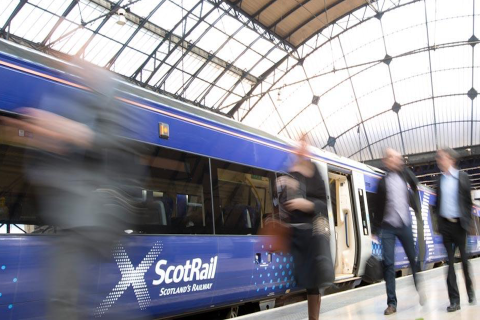Deutsche Bahn introduces innovative energy hub in Tübingen

As part of its corporate strategy “Strong Rail,” Deutsche Bahn (DB) has launched an Innovation Hub in Tübingen.
This initiative, spearheaded by the DB Energie subsidiary, focuses on testing new technologies for sustainable rail energy supply. A key aspect of the project is the development of a technical interface to the overhead lines, facilitating the direct integration of renewable energy into the rail power grid. The aim is to explore efficient energy solutions for future rail power needs, considering the increasing integration of renewable energy sources.
The facility in Tübingen comprises six components, with a central role played by a device known as a “Sector Coupler,” co-developed by DB for this project. This device acts as the interface to the overhead lines, connecting them to a hydrogen generation unit and a battery storage system. The Sector Coupler is already operational in Tübingen for a project involving the production of green hydrogen to power hydrogen trains.
Carbon neutral by 2040
DB is committed to carbon neutrality by 2040. Currently, 68 per cent of its rail power mix is sourced from renewables. By 2038, DB aims for its entire rail power to be from renewable sources, with an interim target of 80% by 2030. Since 2018, passengers on long-distance journeys within Germany have travelled in trains powered by fully green energy.
Dr. Andreas Hoffknecht, Technical Director of DB Energie GmbH, stated, “DB Energie is actively driving the rail industry’s energy transition. Through the Innovation Hub in Tübingen, we are testing innovative technologies to gain insights into how we can flexibly respond to scenarios like periods of low renewable energy production.”
As the network operator, DB Energie manages the 8,000-kilometer rail power grid, supplying electricity to around 20,000 trains daily. With the expansion of renewables, the rail power grid will transform, with numerous smaller points of entry supplying fluctuating amounts of green energy.
Compared to large converter stations, Sector Couplers can directly inject locally generated green energy into the overhead lines, optimizing network capacity and eliminating the need for long-distance transmission. Moreover, Sector Couplers can serve as interfaces between overhead lines and storage technologies, enabling flexible responses to network fluctuations. In Tübingen, DB Energie is utilizing an innovative Second Life battery storage system developed by encore | DB, an internal DB startup, comprising refurbished batteries from electric vehicles.
Further reading:




